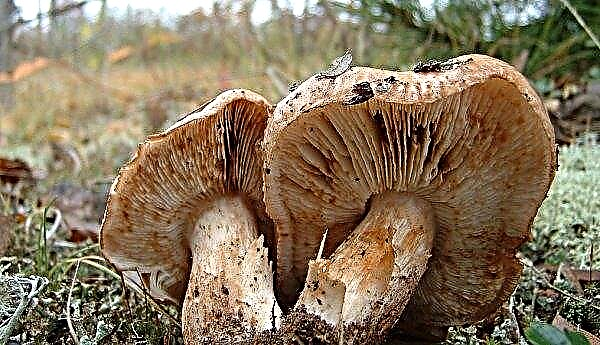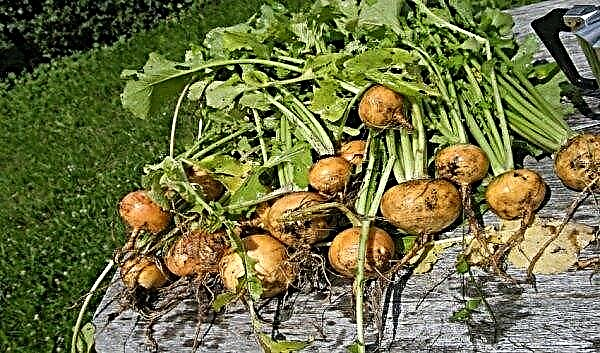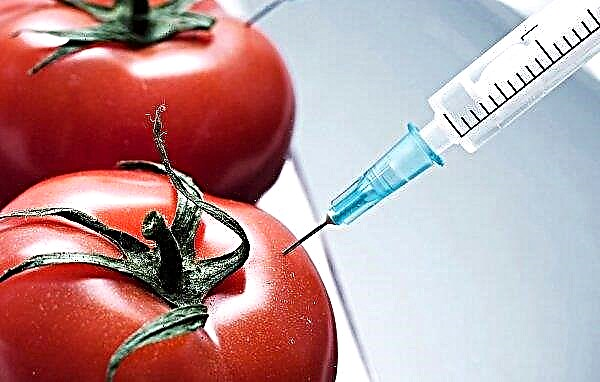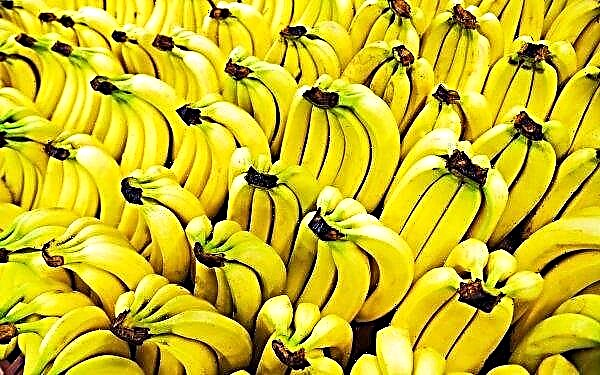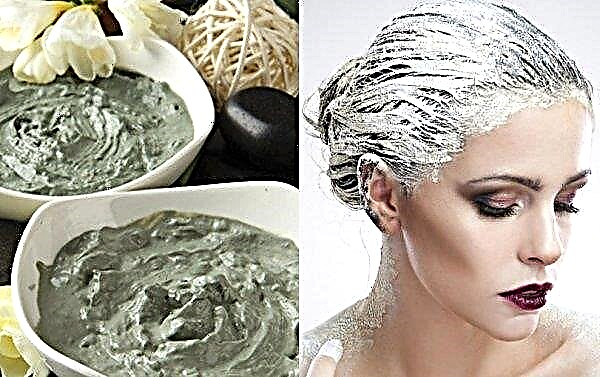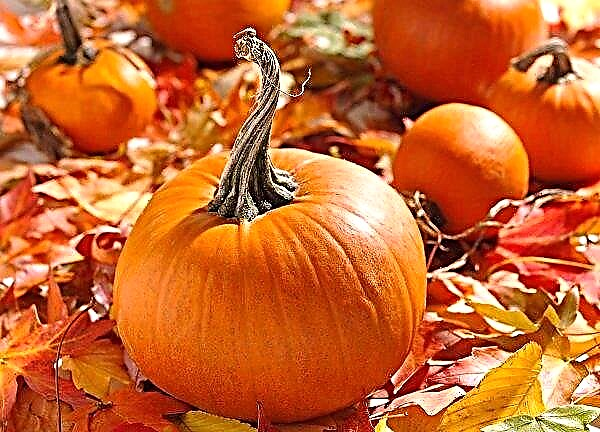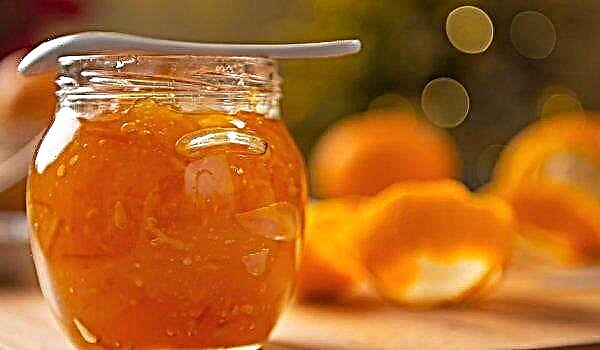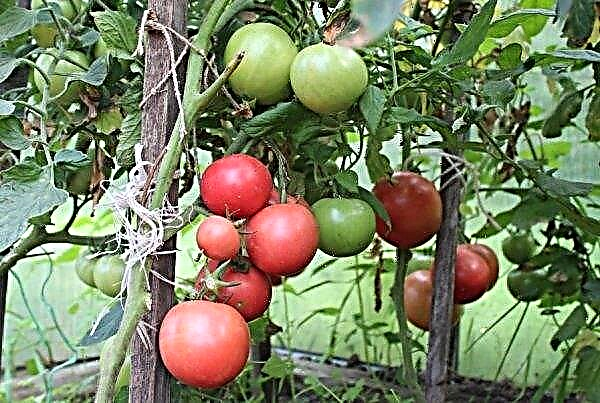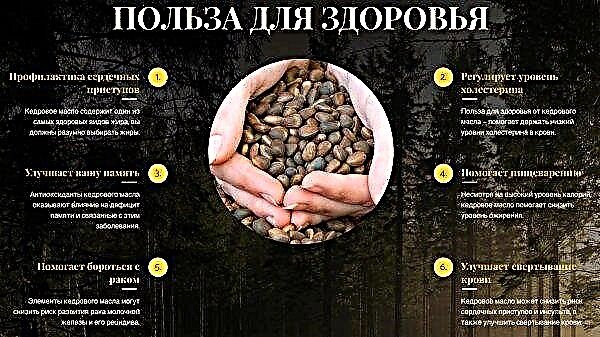For households, poultry farmers try to choose the most optimal breed of chickens, which will combine high rates of egg production and meatiness, along with unpretentiousness in the content. A breed such as the Plymouthrock meets all these requirements; in addition, its representatives have a beautiful appearance and will be able to decorate the compound with one of their presence.
History reference
This breed was bred by US breeders in the middle of the XIX century. As the source material, black Spanish males and chickens of the Langshana, Kohinin, Brama and Dominican breeds were used. By crossing the light, hens appeared that have excellent indicators of productivity, while not showing particular whimsical content.
These birds got their name in honor of the city where they were bred, Plymouth, in combination with the word "rock", which characterizes the strong physique of the bird. Soon, the plymouth rock became popular with poultry farmers and farmers all over the planet. For the first time this breed was brought to Russia only at the beginning of the twentieth century, and soon it became a breeding material for various domestic birds.
For the first time this breed was brought to Russia only at the beginning of the twentieth century, and soon it became a breeding material for various domestic birds.
Especially popular are chickens of the American and English varieties. In countries of Europe and America, a white plymutrok is bred more, as their meat has high quality indicators, and the birds themselves have good survivability. Striped individuals are more often found as a farm decoration.
Did you know? German breeders in the early 1910s brought dwarf chickens of the Plymouth breed, which in all respects resemble their relatives, except for sizes.
General characteristics
The most valuable birds are purebred, because their productivity indicators remain at a high level. It is for this reason that poultry farmers pay special attention to breed standards, which include appearance, productive qualities and temperament.
Appearance
Although this breed originated in the 1860s and was first presented to the general public in 1869, the Plymouth Rock standards were officially fixed only in 1910.
| Sign | Characteristic |
| Head | Medium in size. Crowned with scarlet smooth oval-shaped lobes and elongated red earrings. |
| Crest | Small size, leaf-shaped; carries from 4 to 6 teeth. |
| Beak | Yellow, short. |
| Neck | Medium length, crowned with a dense and magnificent plumage. |
| Chest | Wide, raised and convex. |
| Stomach | Deep, wide and full. |
| Wings | Medium in size, close to the body. |
| Tail | Small in size, slightly folded back. It has a dense plumage. |
| Paws | Short, yellow in color, and claws light yellow. Strongly feathered, but well developed. |
| Plumage and color | The plumage is tight to the body, there are no air gaps. In the color scheme there are white, black, yellow, fawn, blue, shades. According to the drawing, the colors are striped and speckled. The feather has a uniform color along the entire length. The fluff does not carry a certain pattern, but the lines are clearly visible. |
Striped plymouthrock chickens have a characteristic matte dark color, and there is a distinctive white speck on the head, back and tummy. The sex of young animals can be determined by a spot on the head: in hens it is large with clear boundaries, and in males it is small with fuzzy edges. White Plymouth Rock chickens are light colored.
Important! In purebred chickens, the beak, skin, and metatarsus have a rich yellow color, orange-red eyes, and red lobes. Any deviation from these norms indicates the presence of an impurity. More about the impurity can be indicated by such signs as narrow body, irregular shape head and comb, or plumage on the metatarsus.
Temperament
These chickens are peaceful and completely non-aggressive. They lead a sedentary lifestyle, easily adapting to any conditions. At the same time, they eagerly swarm in the yard of their chicken coop and make no attempt to escape. Feathered birds easily remember their master and housing. They also tend to be attached to a person, and without excitement they can eat from the hands of the owner.
Feathered birds easily remember their master and housing. They also tend to be attached to a person, and without excitement they can eat from the hands of the owner.
Advantages and disadvantages
- The advantages of the breed include:
- unpretentiousness in the content;
- good egg production;
- tasty meat;
- excellent maternal instinct;
- high percentage of offspring survival;
- peaceful character;
- no need for high fences;
- rapid ripening and weight gain;
- excellent immunity to various diseases;
- when crossing with other breeds, only positive qualities are transmitted to future offspring.
- However, the following can be distinguished as cons:
- long plumage of young offspring;
- yellow meat.
Home Content
Despite endurance and the ability to adapt quickly, birds need some care and attention to maintain good productivity.
Did you know? Although the chicken’s brain is no more than a walnut, it can remember more than 100 eggs, is easy to learn and time-oriented, and recognizes its owner among many other people from a distance of 10 meters.
Chicken coop
Chickens of this breed must be kept in a spacious chicken coop, while it must be light and dry. Making high perches is not worth it, as well as other obstacles, as birds can injure themselves.
It is better to cover the floor with dry and clean peat bedding, but straw and hay are also suitable, which will warm the paws of the hens. However, it is worthwhile to ensure that the litter does not get wet and does not become a beneficial environment for the propagation of harmful microorganisms. In order for humidity in the chicken coop to be constant, it is necessary to install a ventilation system. In addition, such a system will control the influx of fresh air and protect animals from harmful fumes of ammonia, which is released during the decomposition of excrement.
In order for humidity in the chicken coop to be constant, it is necessary to install a ventilation system. In addition, such a system will control the influx of fresh air and protect animals from harmful fumes of ammonia, which is released during the decomposition of excrement.
You can install a ventilation system with a damper that allows you to control the speed of air into the room and prevent rapid cooling in the cold season.
Important! When keeping daily chickens, it is necessary to maintain a constant temperature of 30° C. Starting at the age of one month, the temperature gradually drops to 20–22° C.
For better egg production, it is necessary to maintain daylight hours, which will last at least 11 hours, but not more than 15 hours. For convenient control of the duration of lighting, you can use the time controller, which will be set, for example, from 6:00 to 19:00.
Additional sources of heat in the chicken coop are not required, since the Plymouth rooks have dense plumage, and they easily tolerate cold. The main thing is that drafts do not occur in the room, and the walls and ceiling are additionally insulated. Nests must be placed in secluded places so that cold air does not fall on them. It is advisable to install them on a certain hill.
Care
Clean in the chicken house every week. Once a week, you need to remove the old litter and cover a new layer of litter. And once a month it is worth completely changing the litter. Once a month, it is necessary to change the hay in the nests, since it, like the litter, has the tendency to lie down and get dirty. If you neglect these requirements, the eggs will be dirty. Daily drinkers and feeders must be washed. For the normal functioning of the digestive system of birds, it is also necessary to take care of the constant presence of sand and shell rock, and if necessary, constantly add it.
Daily drinkers and feeders must be washed. For the normal functioning of the digestive system of birds, it is also necessary to take care of the constant presence of sand and shell rock, and if necessary, constantly add it.
Not only feeders, drinking bowls or a chicken coop should be clean, but also the birds themselves, because the quality of the final product also depends on their health. To maintain a beautiful and clean plumage, it is necessary to enable the bird, if necessary, to take ash baths. Ash should be poured once every few days, as necessary.
Did you know? The rooster, in addition to the fertilization of eggs, performs other important duties. For example, he monitors chickens and checks to see if everyone has awakened in the morning. In addition, he calls to the feeder and to the nest. In chicken skirmishes, the cock plays the role of a referee, and also acts as a defender of the entire flock from the attack of predators.
Once every 3 months, but at least once every six months, a complete disinfection of the room should be carried out. This will protect chickens from various diseases that are associated with the reproduction of parasitic microorganisms. As a disinfectant, you can use lime or potassium permanganate in combination with hydrochloric acid.
For disinfection, crystalline iodine can also be used in combination with aluminum powder and water. All components are combined in proportion: 10 g of iodine, 1 g of aluminum powder, which is rubbed with a file, and 1.5 ml of water per 20 cubic meters. m chicken coop. The resulting mixture gives off aluminum chloride and is safe for chickens. Disinfection time 30 minutes.
Place for walking
In the summertime, Plymutrok chickens need a walk. Such walks allow you to stretch your muscles and connective tissues, soak in the warming sun. Sunbathing has a positive effect on the resistance of birds to disease. For the safety of your bird, it is necessary to protect the place of walking from possible predators. From above, you can stretch the net, which will become a barrier to the peregrine falcon, golden eagle and other birds of prey, however, it will let in sunlight.
For the safety of your bird, it is necessary to protect the place of walking from possible predators. From above, you can stretch the net, which will become a barrier to the peregrine falcon, golden eagle and other birds of prey, however, it will let in sunlight.
Along the perimeter, it is necessary to block the chicken coop from such animals as, for example, weasel. These precautions will save your flock of birds and prevent the development of a variety of diseases.
Also, when organizing a walking place, you need to remember that chickens love to eat grass and look for worms and other animals. The presence of constant access to greens can significantly reduce feed costs. If green food is not freely available, it must be given daily.
Important! If the bird is given an unlimited amount of sunflower and cereal, this will lead to obesity.
Feeding troughs and drinking bowls
To feed a large number of birds, you can use hopper feeders, which will be independently filled in the process of eating. In addition, such a feeder can significantly save time caring for the bird.
For a small amount, you can use a simple flute or trough feeder. Material for feeders can also be varied. Many craftsmen make feeders based on plastic sewer pipes. As a drinking bowl you can use both small open containers and drinking bowls with an additional volume of liquid (for example, drinking bowls made of plastic containers and a fragment of a sewer pipe).
As a drinking bowl you can use both small open containers and drinking bowls with an additional volume of liquid (for example, drinking bowls made of plastic containers and a fragment of a sewer pipe).
Install these devices in a place convenient for birds. Bunker feeders and drinking bowls are best placed near the walls. They can also be additionally fixed so that they do not fall and do not roll over.
Shedding and egg laying break
Every year, at the end of autumn, chickens change their feather cover. During this period, birds need a good diet. In addition, during molting, egg production decreases significantly, so it is necessary to reduce the duration of daylight hours and allow the bird to rest.
Herd replacement planned
Plymouth rock has a lifespan of only 3 years, so you need to prepare in advance for updating your house. This is best done after 2 years from the time of breeding. In this case, you will be able to timely prepare the young, and you will not have an interruption in egg production. When raising chickens as broilers, the herd can be updated annually. The main thing is to take care of the presence of layers that can provide a constant flow of new young growth.
When raising chickens as broilers, the herd can be updated annually. The main thing is to take care of the presence of layers that can provide a constant flow of new young growth.
Feeding
It should be borne in mind that the diet varies significantly for chickens and adult chickens.
Chickens
The first meal of hatching chickens should occur during the first 12 hours of life. And starting from the first days, the diet should consist of 6–7 meals in small portions, which chickens can eat in 5–10 minutes. After this time, the feed must be removed, as it can become acidic, and chickens - poison.
Important! If the nestlings have a developmental delay, immunity is weakened, then mineral supplements, homemade cottage cheese, fish oil and glucose syrup are introduced as a supplement to the diet.
Two types of nutrition can be used for feeding: boiled corn grits or grated egg yolk, which was previously boiled. However, it is worth remembering that a large amount of fat is present in the yolk, which can negatively affect the health of chickens, causing them to have an indigestion. Such a diet is given during the first seven days.
From the second week, babies are given semolina and egg yolk, in which root vegetables (carrots, potatoes) and vegetables can be added, but they need to be added a little. When the body of chickens gets stronger, and this happens by about a month, the diet can be varied with fresh grass and coarse grains. Root crops and vegetables remain in the same amount, because they allow you to provide young animals with the necessary minerals and vitamins. And already at the age of 1.5 months, chickens are transferred to grain and balanced feed.
When the body of chickens gets stronger, and this happens by about a month, the diet can be varied with fresh grass and coarse grains. Root crops and vegetables remain in the same amount, because they allow you to provide young animals with the necessary minerals and vitamins. And already at the age of 1.5 months, chickens are transferred to grain and balanced feed.
Adult chickens
Adult chickens can be fed with a mash, which is made on the basis of various cereals, seeding, boiled root crops and vegetables and water or broth. Such food is preferably given in the morning.
In the warm season, an integral part of the diet is greens, which are given at lunchtime. At the same time, it must be put in the shade so that it stays fresh for a longer time. In cold weather, it can be replaced with dried grass or grass meal.
The diet also includes feed based on corn, barley, wheat and mineral and vitamin supplements. In the evening, whole grains are the most suitable food. At the same time, the process of digesting whole grains will allow chickens to stay full for a long time and keep warm throughout the night.
With the onset of cold weather, bird food is given in a warm form, and the amount of grain is increased by 15–20%. Plymutrok chickens are quite unpretentious in nutrition and maintenance and also have excellent productivity indicators. A calm temperament and a well-developed instinct of a hen made them their favorites in many countries of the world.
Plymutrok chickens are quite unpretentious in nutrition and maintenance and also have excellent productivity indicators. A calm temperament and a well-developed instinct of a hen made them their favorites in many countries of the world.

